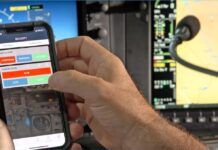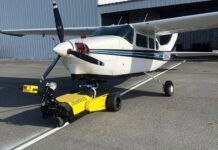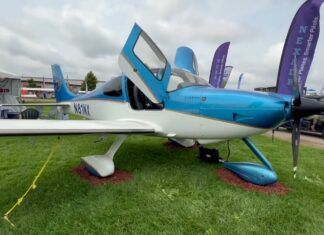The ILS approach hardware at Houston Hobby International pictured below is likely planted in the turf for the long term. Still, there’s a definite trend that points to an airspace based primarily on space-based navigation. As the avionics retrofit market booms along there has been lots of speculation about the future of ground-based navigation, including VOR and ILS systems. For owners looking to equip the aircraft for years to come, that’s muddying the buying decision. And that’s made more difficult with recent primary nav equipment based entirely on GPS, including Garmin’s new line of retrofit navigators. These navigators (the GPS 175, GNC 355 and GNX 375) don’t have VOR or ILS receivers, and shops tells me they are brisk sellers because they can shave thousands from the price of a retrofit, compared to going with Garmin’s VHF nav-equipped GTN navigators. Based on recent discussions I’ve had with buyers, sacrificing the ability to fly an ILS (or navigate with VORs) was either an easy decision or a tough one. Ultimately it comes down to where and how you fly. Dollar savings is the big picture, not only for aircraft owners freshening up old panels, but for the FAA maintaining an old infrastructure of ground-based navaids.
Flash back to somewhere around 2005 when the FAA decommissioned close to 300 NDB stations, and nearly 500 procedures. This resulted in an approximate $8 million per-year savings, rather than feeding the ancient equipment that was far past the service life. The ADF receivers in the fleet of aircraft weren’t getting any younger, or easier for shops to repair, either. If you’ve dealt with repairing a failed King KR85 or KR86, to name two popular boat anchors, you get it. Yanking the ADF receiver from the panel (and the sense antennas from the airframe) made room for GPS gear. Today there’s a similar trend brewing with other ground-based nav systems, including VORs, and the FAA has a focused plan to simply make them disappear.
Phase 1 of the FAA’s MON program (VOR minimum operating network) will be completed later this year and nearly one-third of the nation’s VORs will be decommissioned. After that, the plan is to scrap VORs at a rate of almost one a week. It’s said that over 300 VOR signals will be history by the year 2025. All of this got me thinking about the ILS—the global standard instrument approach first deployed in the late 1930s. Today there are over 1500 Cat I ILS approaches in service and despite the widespread use of precision GPS approach procedures, they may be the approaches of choice for jet ops at big-city airfields. Still, the number of LPV approaches is nearing 4500 since they first appeared in 2003. But there’s a threat to the ILS network evident by the 1700 localizer-only procedures on the cutting block. Like VORs and NDBs, this equipment isn’t getting any younger because the majority of transmitters are beyond the 20-year service life. And by now we all know the benefits of a precision GPS approach compared to an ILS, especially at smaller airfields and in remote areas, while the FAA fully understands the LPV’s software-based cost benefit compared to adding and maintaining ground-based ILS equipment. Yes, the FAA is fixing broken ILS systems, but it certainly isn’t adding any new ones.
Operationally, software-driven precision GPS approaches offer more local flexibility because they can actively be used on both ends of a runway. That’s often not the case with ILS approaches, which can’t be used simultaneously because of interference issues. And speaking of interference, WAAS GPS antenna installations aren’t exactly without challenges, especially on small airframes, but installation is far easier than VHF ILS antennas. Even during an otherwise modern avionics upgrade you’ll likely be paying for the hassles that tag along with VHF navigation antennas. It’s one of those hidden costs that surface when the aircraft hits the shop floor.
So if you struggle with the decision of whether or not to ditch VHF nav capability during the next avionics upgrade, the FAA’s MON program might make the decision easier. Hit us up on Facebook and describe your upgrade strategy. We’re preparing an avionics survey report





